These delicate lemon meringues are the perfect dessert for a special occasion. They are crisp yet irresistibly chewy meringues, laced with lemon zest for a zesty kick. We've served it topped with whipped cream, zesty lemon curd and fruity berries, all piled into a glorious tower. So good…
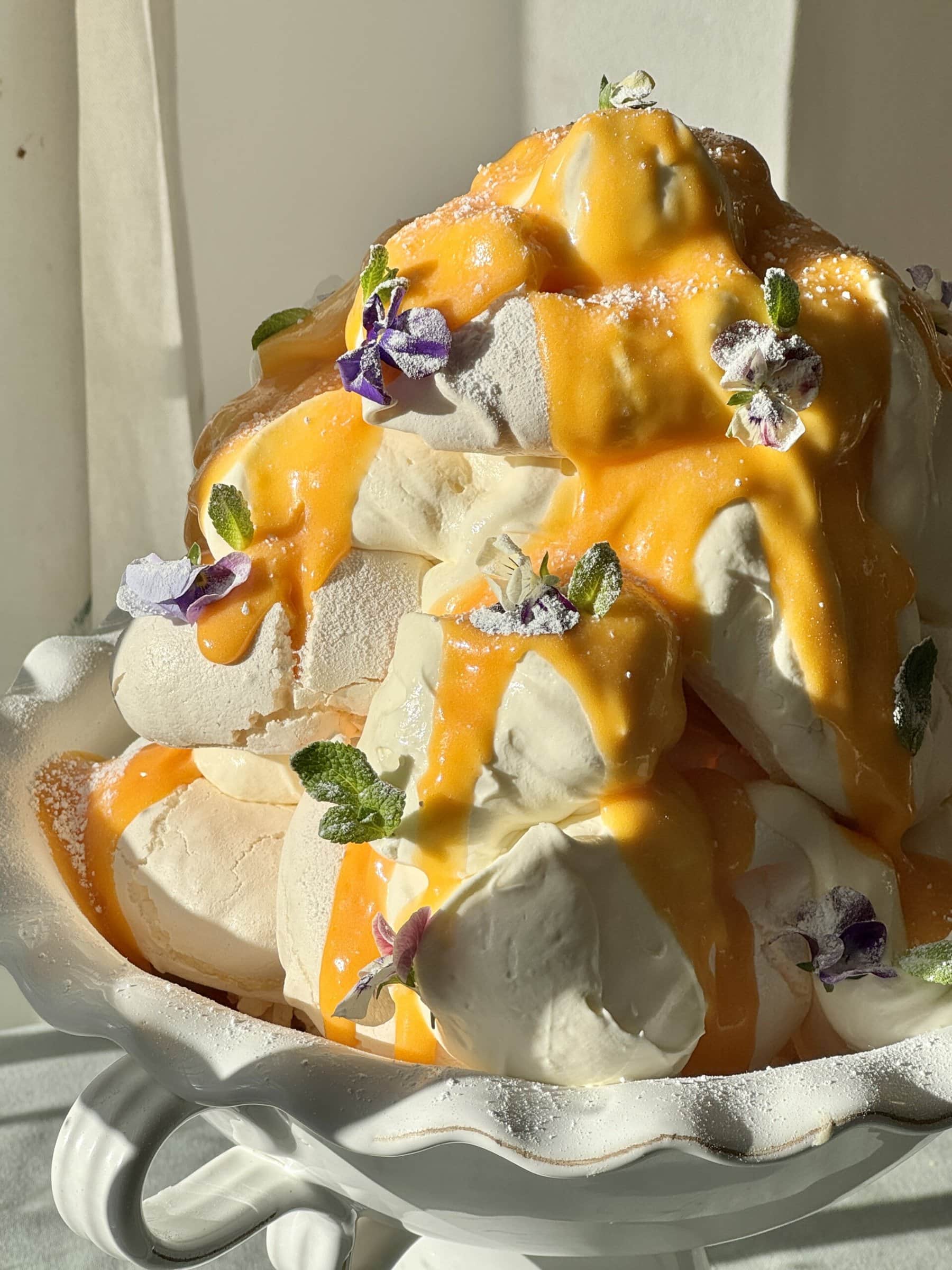
I think a lot of people are scared of making meringues - which is a shame as they are such a brilliant dessert. If you learn one thing from this recipe today, I hope it is that meringues really aren’t scary! If you are new to making meringues, or perhaps looking to build your confidence, these are the perfect place to start. Once you have mastered them, you will be well on your way to making my lemon meringue tart!
Once your meringues have cooled completely, there are so many delicious things you can do with meringue. One way is to keep it simple and add spoonfuls of whipped cream onto each meringue nest, then drizzle with lemon curd and fresh berries. Or you can create a showstopping lemon meringue tower, dolloping over the whipped cream and swirling the lemon curd on top. Sometimes I ribbon the lemon curd through the whipped cream which also looks really pretty. A scattering of fruit adds a final flourish. Or you could even make an Eton Mess! In a large bowl, crumble up lemon meringue into large chunks, and then fold through softly whipped cream and a few tablespoons of lemon curd. So good. Top tip - it's best to assemble any of these just before serving so the lemon meringues don’t go soggy.
Jump to:
- Top Tips for Meringues
- Why you will love this recipe:
- Ingredients
- Substitutions and Variations:
- Here's how to make Lemon Meringues
- How To Make Lemon Curd
- Cooking Tips
- Meringues - A Brief Summary
- Frequently Asked Questions
- Storage & Freezing Instructions
- Other recipes you might enjoy
- Made this recipe and loved it?
- Lemon Meringues
Top Tips for Meringues
Firstly, the bowl in which you whisk your egg whites must be completely clean (and I do mean SPOTLESS) and dry. Any trace of fat or moisture will stop the egg whites from whipping up. I usually take a halved lemon and rub it around the inside of the bowl to remove any fat. Then dry it with a clean tea towel or piece of kitchen paper until totally dry.
Secondly, separate your eggs into a smaller bowl before adding to the main mixing bowl. That way, if a yolk splits, you don’t risk ruining your whole batch and having to start again.
The next key point is to add the sugar slowly. Make sure each spoonful is completely whisked in until you add the next. Without getting too specific, adding the sugar too quickly disrupts the protein in the egg whites, preventing them from properly forming a stable foam. This creates a weaker meringue which is less likely to hold its shape. By adding it slowly, you give the sugar time to dissolve and stabilise the air bubbles which will result in light, fluffy lemon meringues.
My final top tip is to make sure you let the lemon meringues cool slowly. There is a bit of a theme here… to make good meringues, you need patience! I let mine cool for 30 minutes in the (turned off) oven before setting aside to finish cooling completely. This gives plenty of time to make the homemade lemon curd. However, this is completely optional. It is a great way to use up the leftover egg yolks (scroll down to the FAQs for more ideas), but you can just as easily use shop-bought.
Why you will love this recipe:
- They are ideal for a simple dessert that looks impressive. The perfect crowd-pleaser for a special occasion or dinner party.
- All the different elements can be made ahead. Plus you can make some fuss-free shortcuts.
- It is full of flavour and texture. Imagine sweet meringue, zesty lemon curd, creamy whipped cream and fruity berries.
- They are ideal for learning new skills. Find out how to make the perfect French meringue and lemon curd.
- The meringues need just 5 ingredients. Plus a few more easy-to-find ones for the toppings.
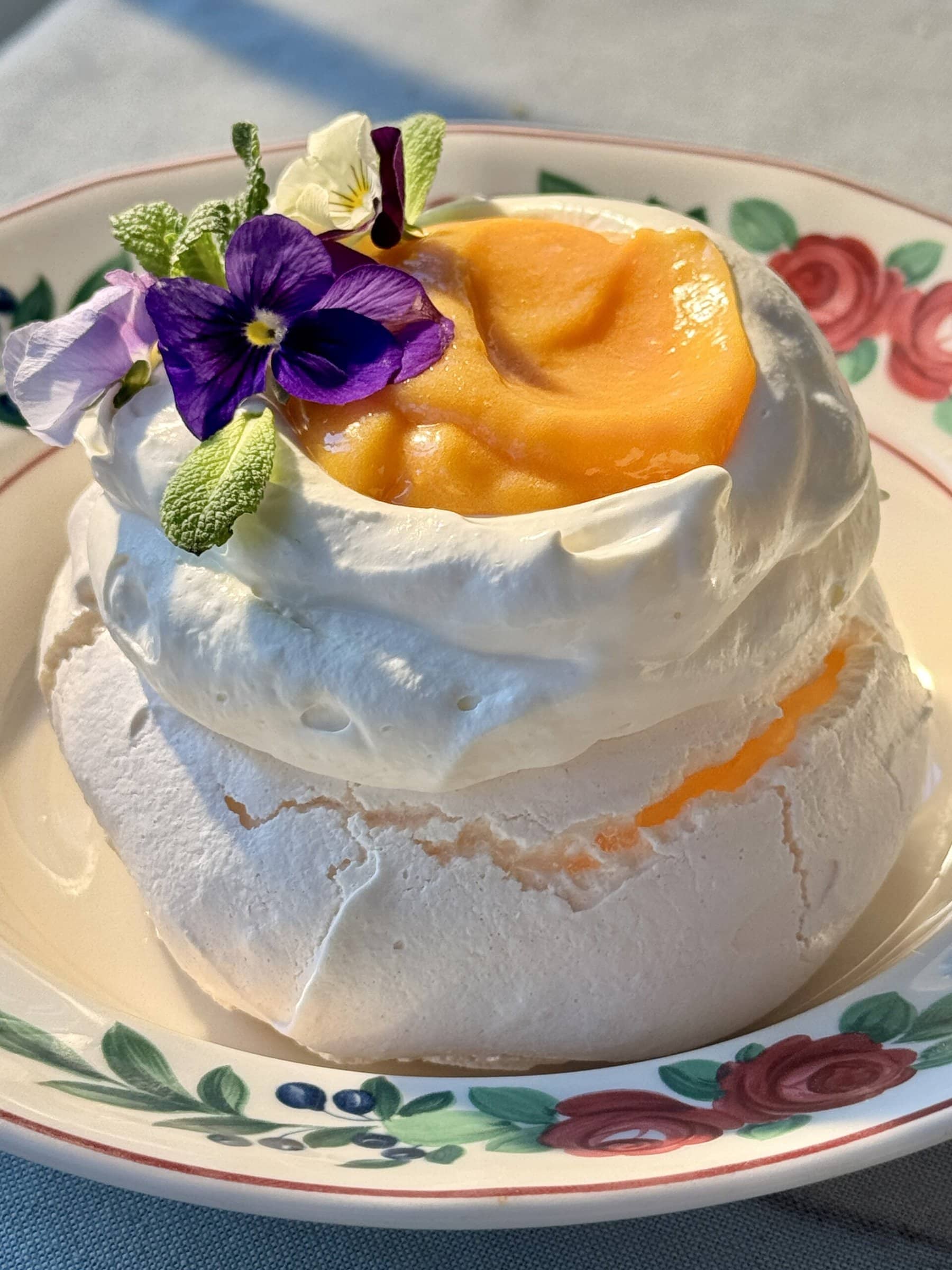
Ingredients
Full recipe can be found in the printable recipe card at the bottom of the post, just scroll down!
Eggs - I recommend free-range large eggs. Try to find ones stamped with the British Lion mark. The meringues are made using egg whites, while the lemon curd is made using egg yolks.
Salt - this won’t make the lemon meringues taste salty. It balances out the sweetness and heightens the other flavours. I recommend Maldon Salt Flakes.
Caster sugar - this adds structure and sweetness to the meringue. It also sweetens the curd, balancing out the acidity of the lemon, and helps create a silky texture by stopping the egg yolk setting too firm.
Lemon - a hint of lemon helps balance out the sweetness in the meringue mixture. It is also, naturally, a key ingredient in the lemon curd and helps give a wonderfully zesty flavour. These lemon meringues use the zest and juice.
Cornflour - this helps stabilise the egg whites in these lemon meringues, making them stronger and less likely to weep. It can also help stop the eggs from drying out and overcooking in the oven.
Butter - opt for unsalted so you can control the salt level in the lemon curd.
Whipped cream - you can use double or whipping cream for the decoration. Feel free to infuse it with icing sugar or some vanilla bean paste or extract.
Fresh fruit - ripe and juicy fruit is the perfect topping for these lemon meringues.
Substitutions and Variations:
Sugar - you can use golden caster sugar if that is what you have. It will give your lemon meringues and lemon curd a slightly darker colour.
Lemon curd - obviously these are lemon meringues so I top them with lemon curd. However, you can use whatever curd you like. Orange curd is also delicious. You could also use jams too or fruit compotes such as raspberry or blackberry.
Fruit - I particularly like berries. Raspberries, sliced strawberries, pitted cherries, blueberries and blackberries are all lovely. Alternatively, go for finely diced mango, pineapple, papaya and/or passion fruit for a tropical flavour.
Coulis - these lemon meringues also taste wonderful drizzled with a fruity coulis. Once again, there are so many options when it comes to flavours. When fresh berries are out of season, I like to make my own coulis with frozen berries (I always have a bag in my freezer as they are super handy for making all sorts of recipes like my frozen berries with hot white chocolate sauce). A passion fruit coulis is utterly divine (especially if you like my white chocolate and passion fruit cheesecake).
Here's how to make Lemon Meringues
Here's a step by step guide for making and assembling the meringues, but you can find the full recipe at the bottom of the page for detailed instructions.
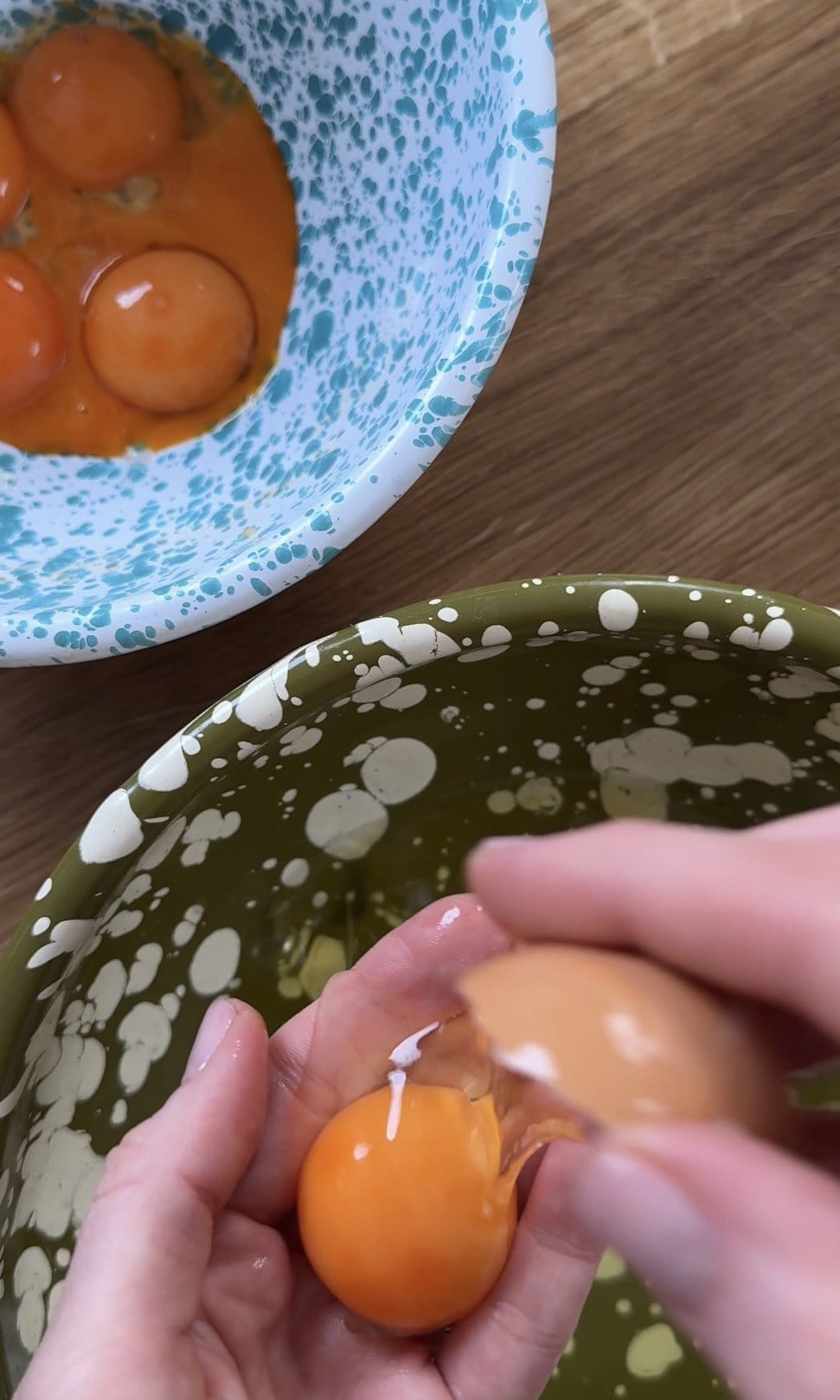
ONE: Preheat the oven to 180ºC/160ºC Fan. Line 2 large baking sheets with non-stick baking paper and set aside. Separate the egg whites from the yolks.
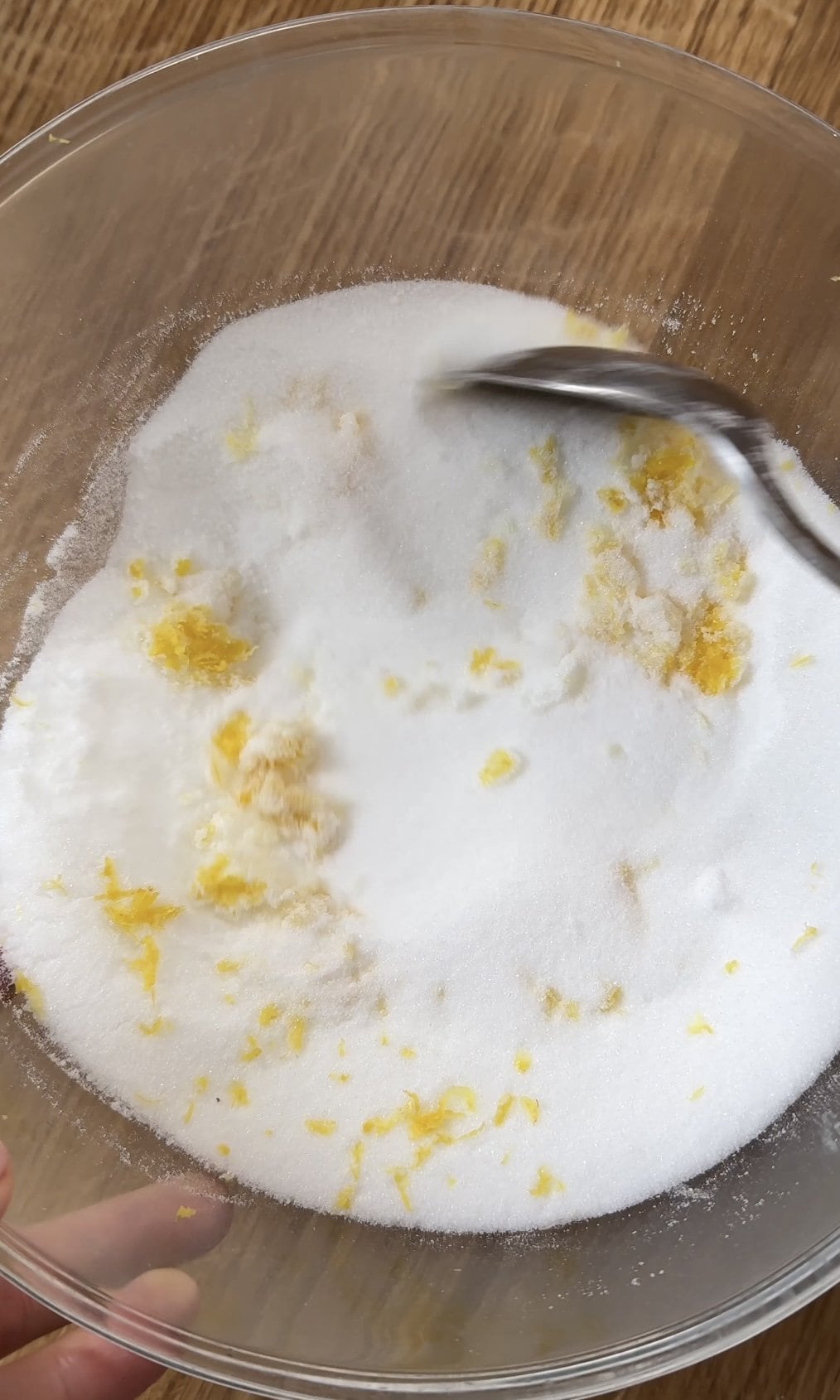
TWO: Meanwhile, in a separate bowl, mix together the caster sugar and lemon zest. Place the egg whites into the bowl of a stand mixer, making sure it is spotlessly clean and dry. Add a generous pinch of flaky sea salt. Whisk on a low speed until foamy, then gradually increase the speed to medium and continue to whisk until soft peaks form (this will take about 3-4 minutes).
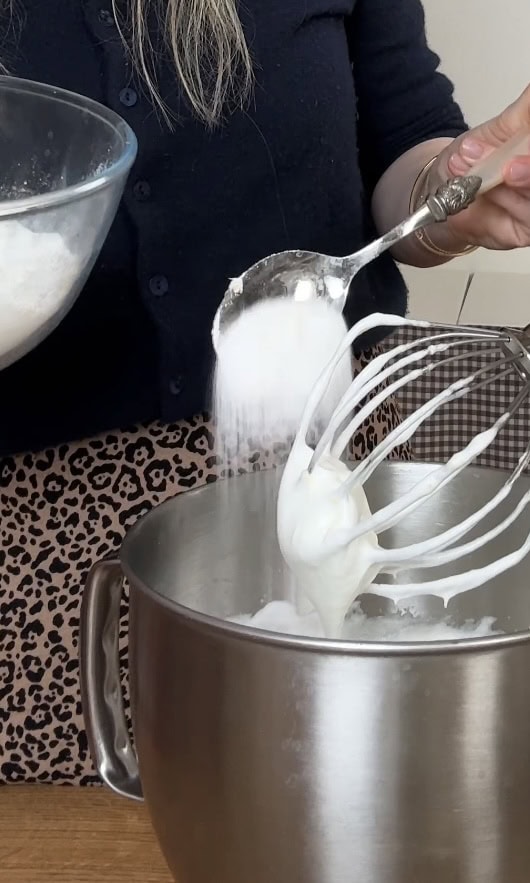
THREE: Increase the speed of the mixer to medium-high, then gradually add the lemon sugar a spoonful at a time. Make sure that each spoonful is completely whisked in before adding the next.
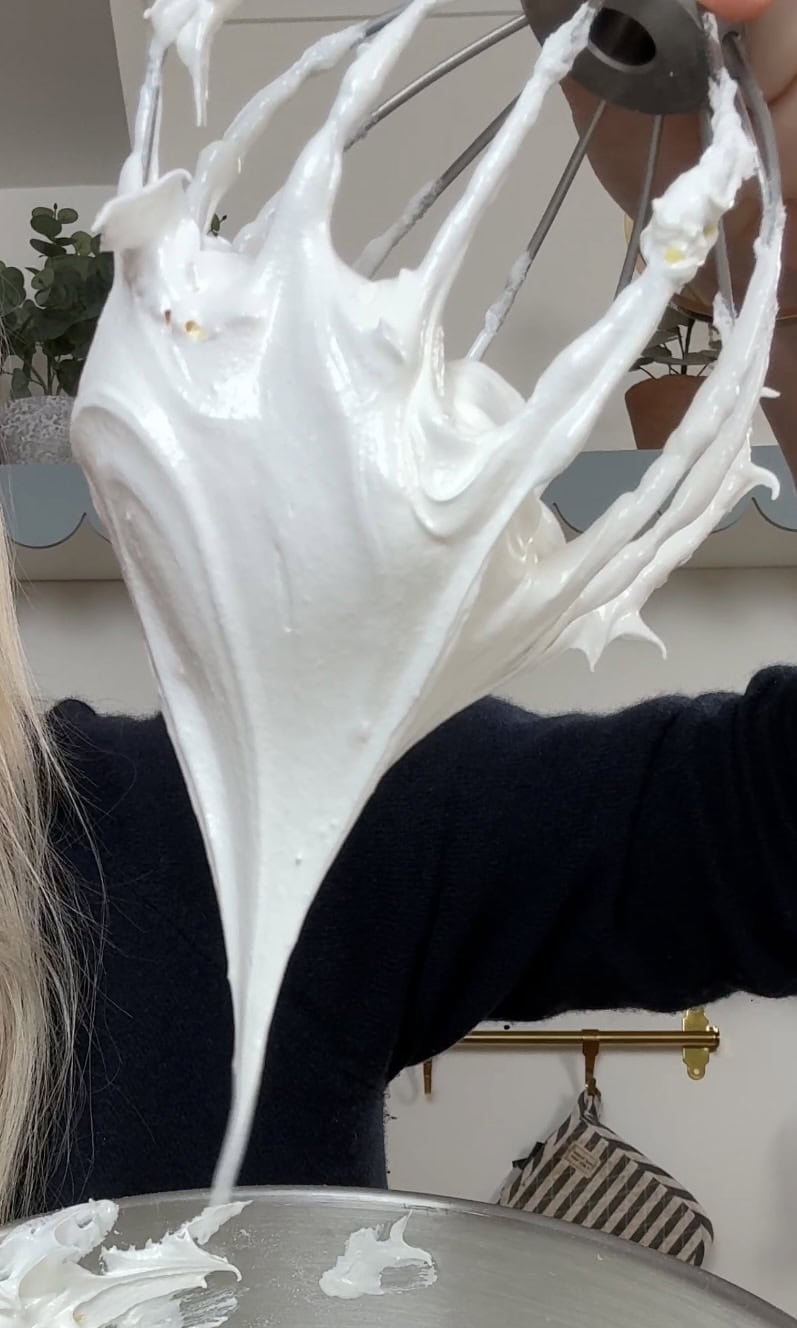
FOUR: Continue until all the sugar has been added and you have a smooth and shiny meringue that holds its shape when turned upside down. This should take about 5 minutes.
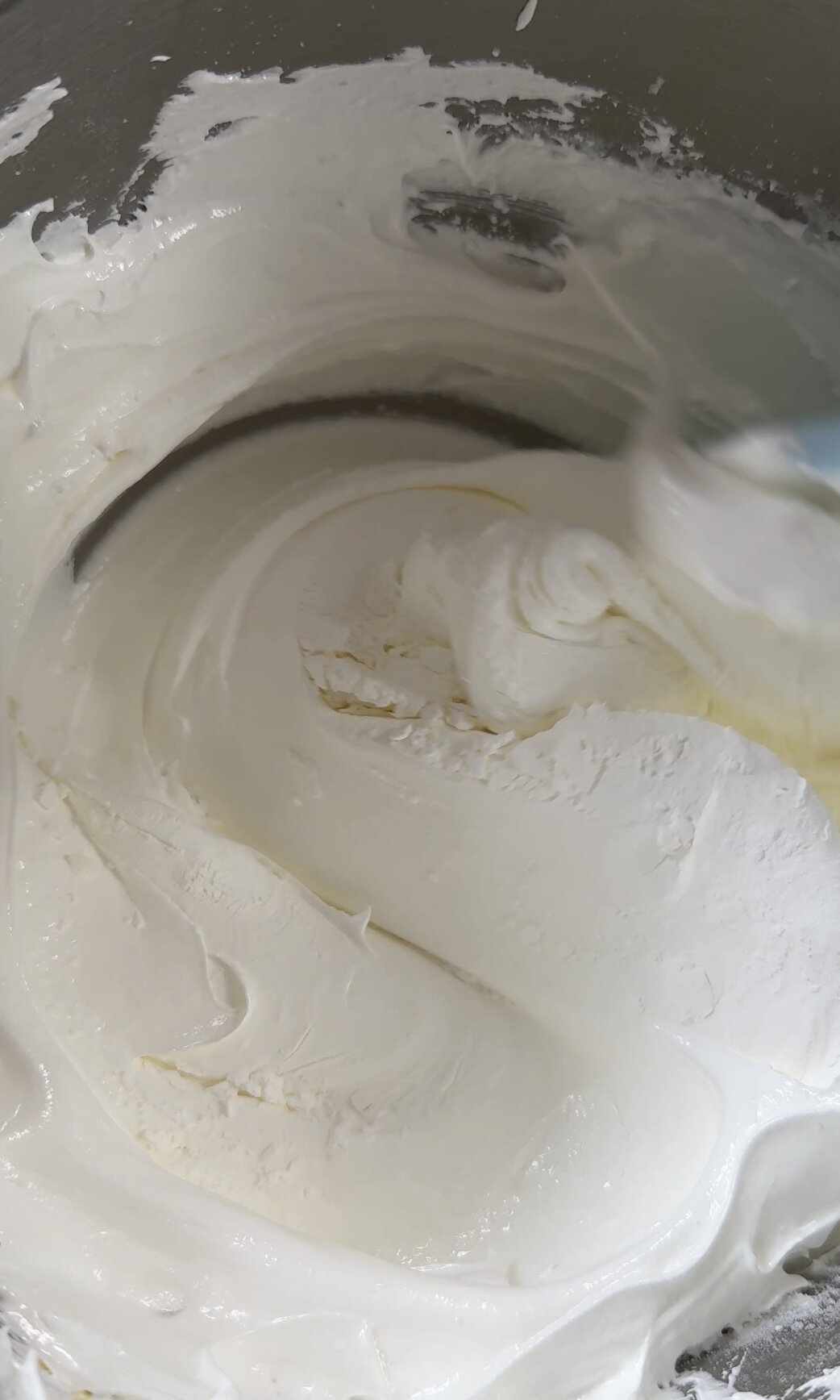
FIVE: Sieve in the cornflour and drizzle in the lemon juice. Fold to combine.
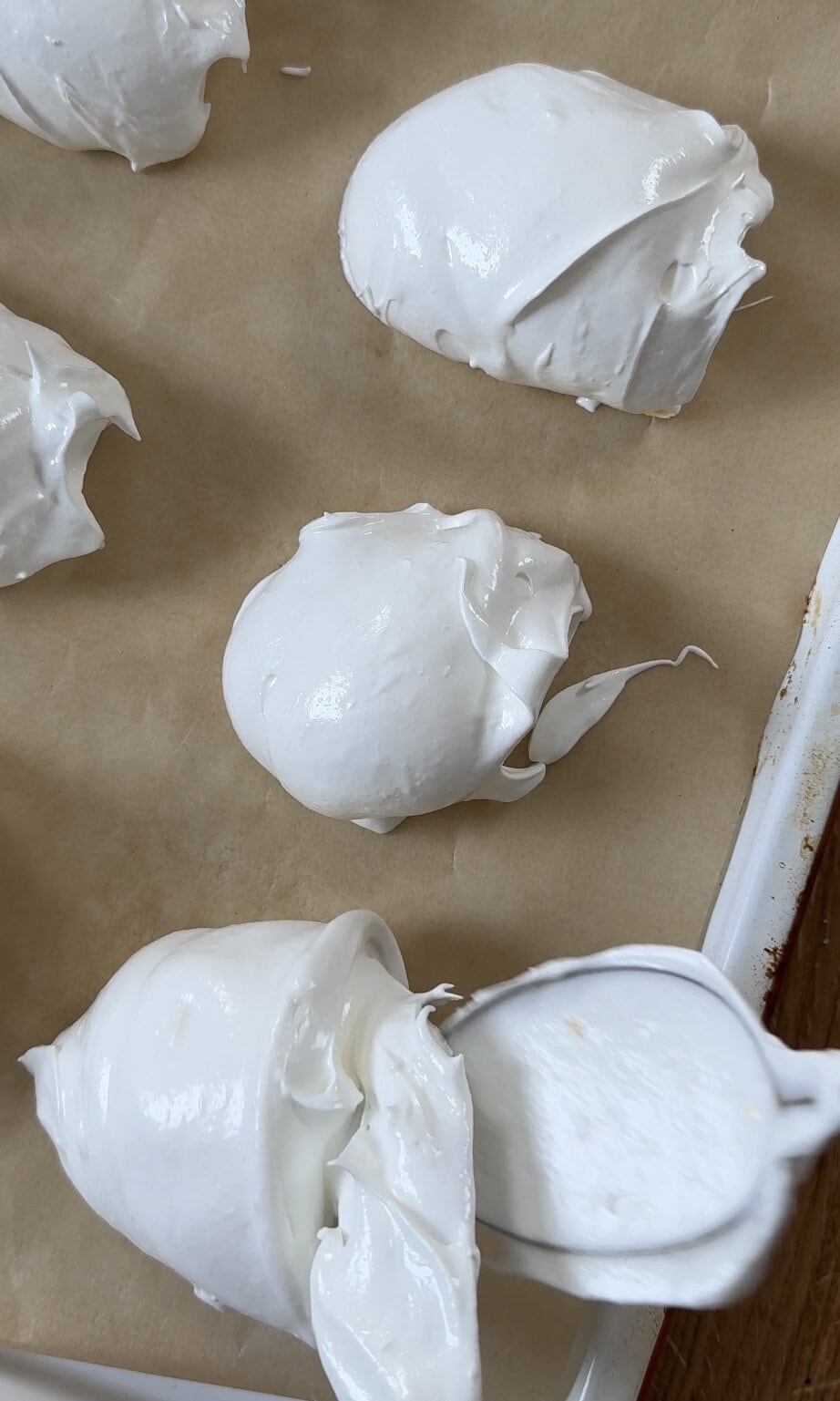
SIX: Using 2 spoons, scoop equal-sized mounds of the meringue, spaced apart, onto the prepared baking sheets (you should have around 12).
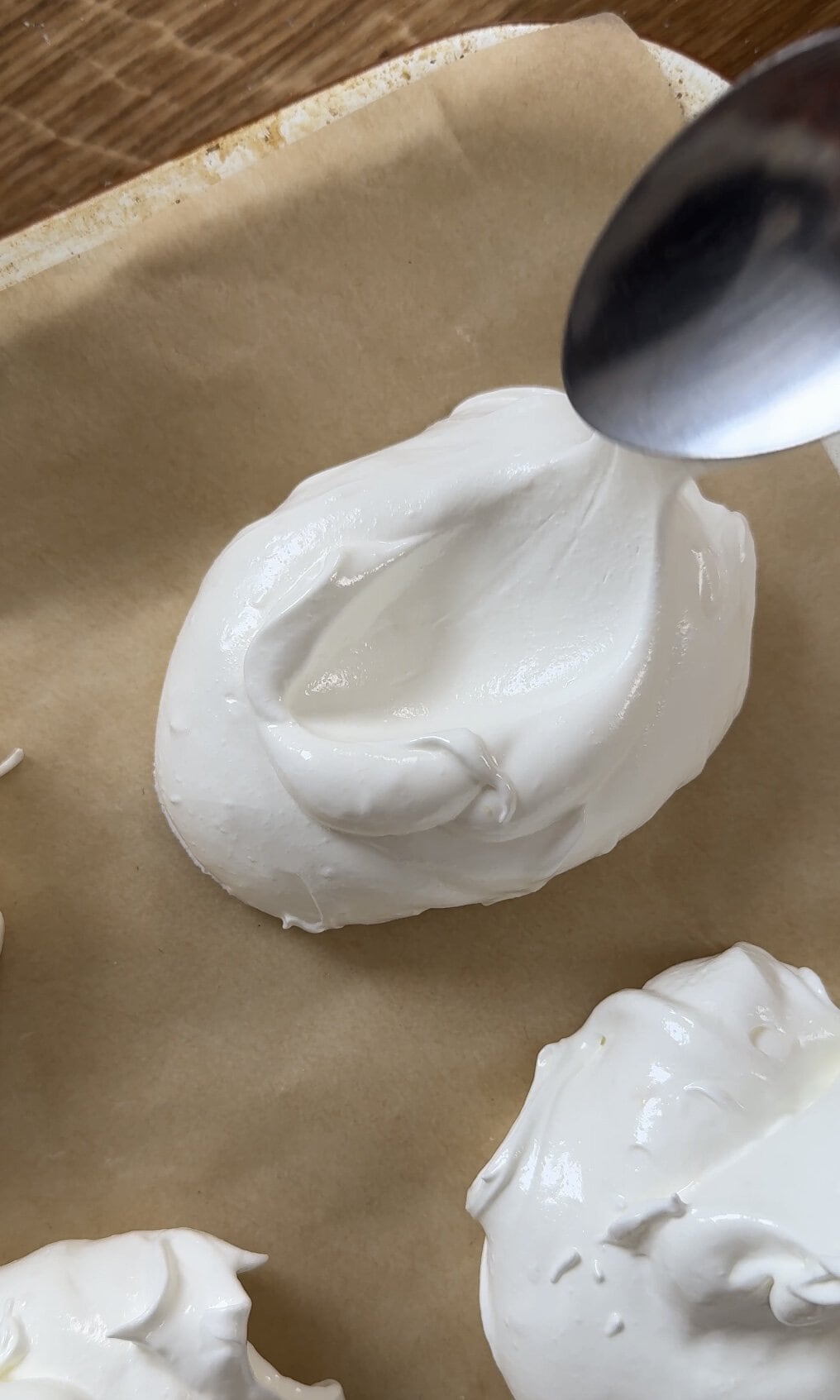
FIVE: Use the back of a spoon to make a little indentation into the centre of each meringue (this will leave space to add your lemon curd).
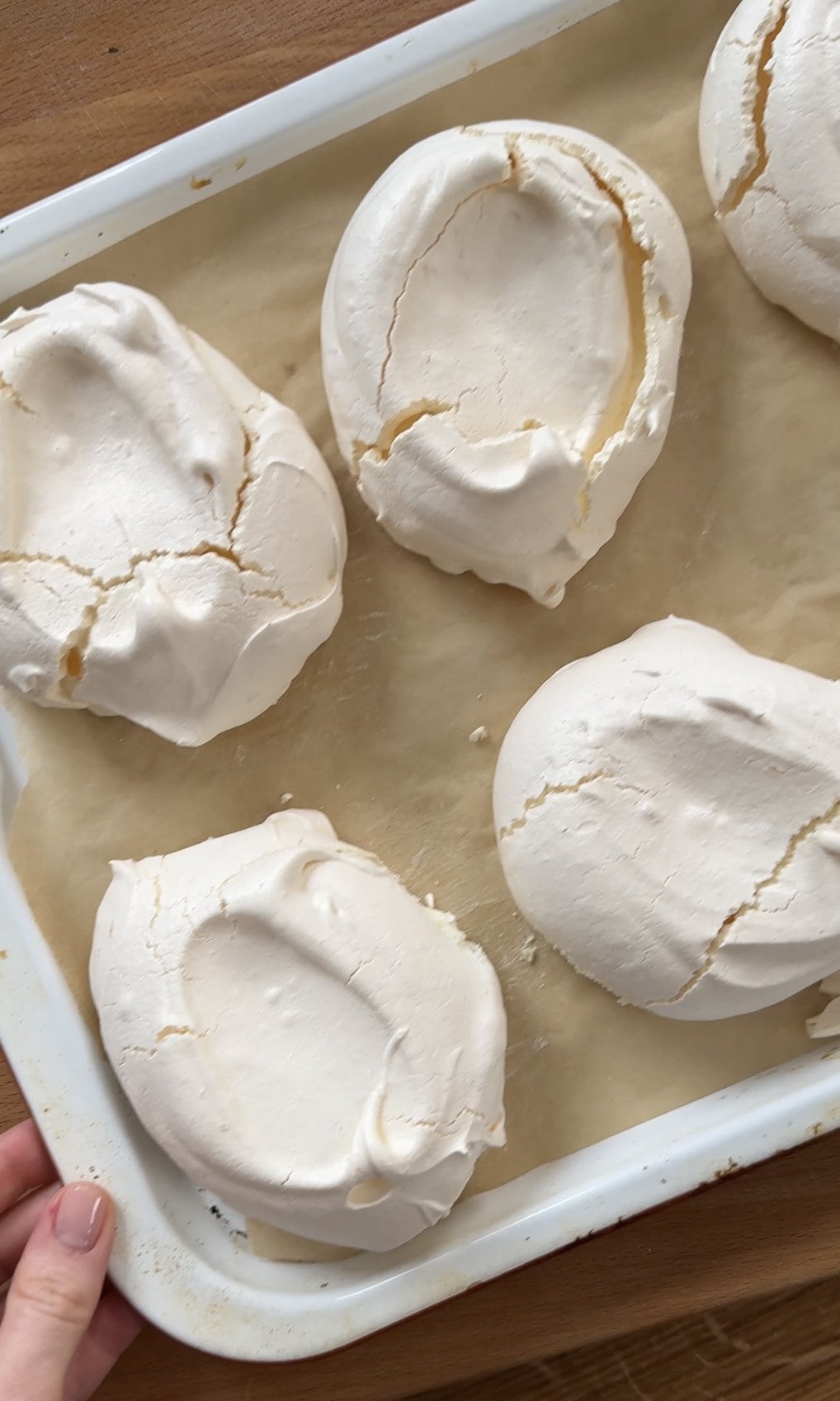
SIX: Place the trays into the oven, then reduce the temperature to 150ºC/130ºC Fan and bake for 30 minutes. Turn the oven off and leave the meringues inside for another 30 minutes. Then remove from the oven and leave to cool completely (they should be crisp on the outside but deliciously chewy on the inside).
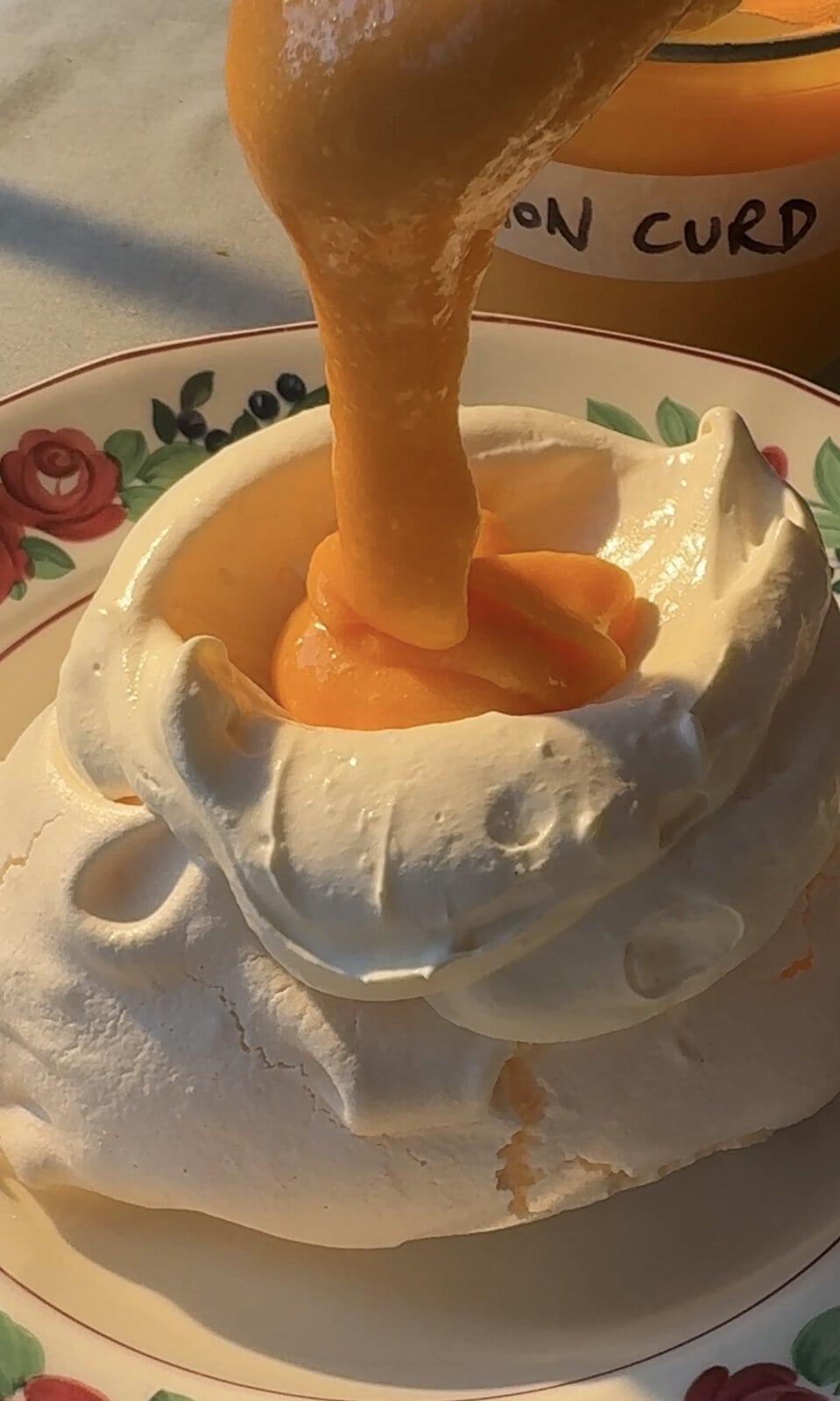
FIVE: To serve: place the cooled meringues onto a serving plate and top with dollops of lightly whipped cream, a spoonful of lemon curd and fresh fruit.
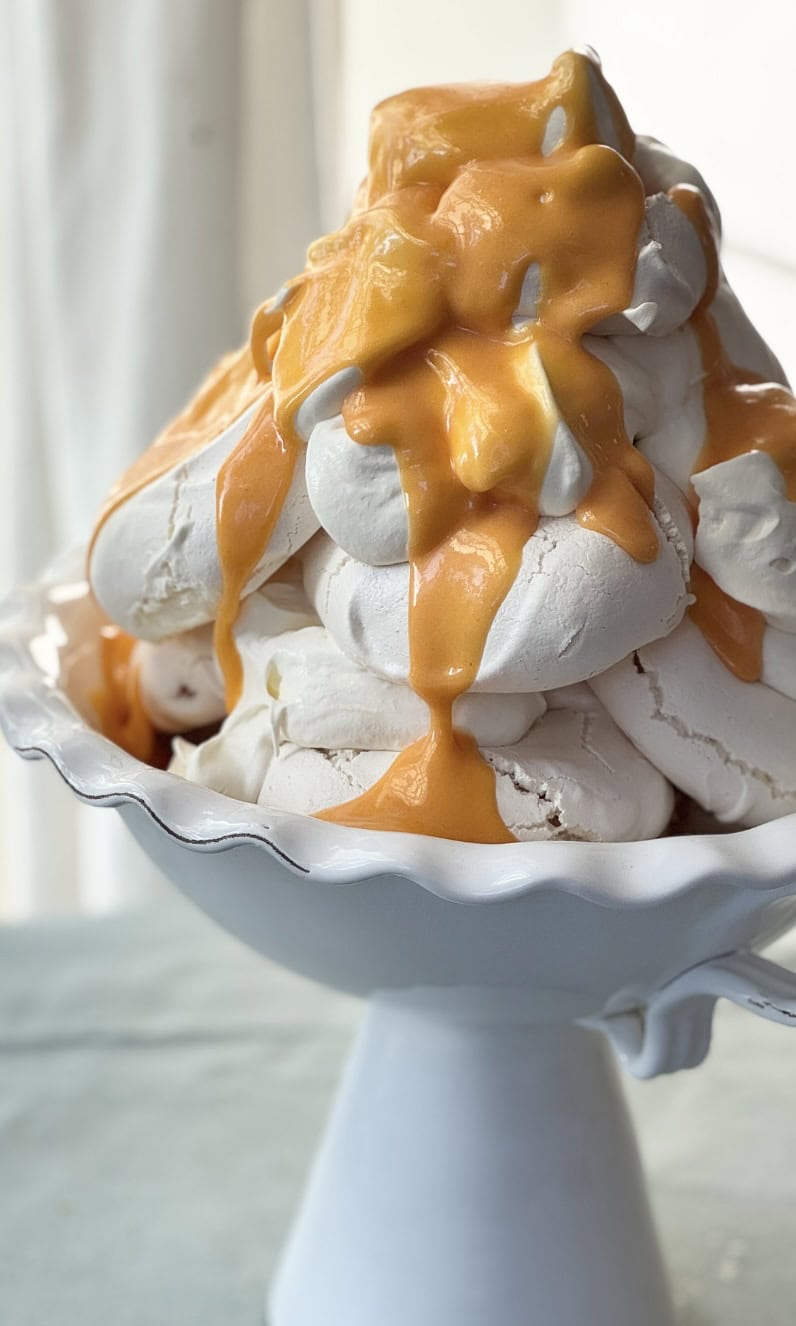
SIX: Alternatively, build into a tower and dollop over the cream before drizzling over the lemon curd. Enjoy!
How To Make Lemon Curd
We also have a full lemon curd guide with tips and a step-by-step guide to making the perfect one. It should be zesty and bright, with a hint of sweetness. The full recipe is also at the bottom of the page but if you want more guidance, use this Lemon Curd guide.

Cooking Tips
One at a time: I always suggest separating them one at a time into a smaller bowl before adding to the main mixing bowl. Then you don’t risk ruining an entire batch of egg whites if you accidentally pierce a yolk. This is really important as even the smallest drop of egg yolk will prevent the egg whites from whisking up properly.
Room temperature egg whites: using room temperature egg whites will help your meringue whisk up faster and give them a better volume.
A clean, dry bowl: it is really important to make sure your bowl is completely clean and dry before you add the egg whites. Any traces of liquid or fat will stop them from whisking up. I usually take a halved lemon and rub it around the inside of the bowl to remove any fat. Then dry it with a clean tea towel or piece of kitchen paper until totally dry.
Meringue kisses: I make around 12 medium-sized meringue nests. However, you can make smaller, daintier meringue kisses by piping small swirls onto the baking sheet. They should take about the same amount of time as these meringues as you want them crispier rather than chewier. These would be delicious sandwiched together with the whipped cream.
Slow cooling: you want to let these lemon meringues cool slowly to keep their delicate structure and create a crisp exterior. Cooling rapidly can cause them to crack and break.
Gentle heat: make sure you keep the curd over a gentle heat and stir constantly. Otherwise, you will end up with lemon scrambled eggs!
Metal-free equipment: when making the lemon curd, try to avoid using metal kitchen equipment. I find it gives the lemon curd an odd metallic taste. Use a glass or ceramic bowl and a plastic/silicon spatula or whisk. Use a cast iron or enamel pan.
Meringues - A Brief Summary
There are several different types of meringue - all with slightly different techniques, and varying degrees of difficulty and stability. However, they all have the same premise of creating something utterly delicious using sugar and egg whites. The 3 main ones are:
- French meringue - this is the most commonly used, super simple, meringue (and what I use for these lemon meringues). You just add sugar to whisked egg whites whilst continuing to whisk into a stiff meringue. That is what we are making here.
- Italian meringue - this is the one I use in my lemon meringue cheesecake. It involves making a hot sugar syrup, then slowly adding it to whisked egg whites. The result? A smooth and glossy meringue. It is popular with professional bakers and patisseries because it is shiny and the most stable.
- Swiss meringue - here the egg whites and sugar are whisked over a pan of gently simmering water until they reach 60C. Next, they are whisked until they reach stiff peaks. It has a deliciously smooth, silky texture and is often used in buttercream (like in my white chocolate and raspberry cake).

Frequently Asked Questions
They are delicious topped with whipped cream and a drizzle of lemon curd (homemade or shopbought). A handful of fruity berries or diced tropical fruit is an added bonus. Alternatively, you can create a showstopping lemon meringue dessert by piling them high in a tower, dolloping over the cream and drizzling with the curd. So simple, yet so good.
Basically the lemon juice helps to stabilise these lemon meringues. Since lemon juice is acidic, it helps denature the proteins in the egg white. This allows them to form strong bonds which gives a more stable meringue. This is good news for bakers as it means they are less likely to break.
There are so many delicious ways to enjoy the homemade lemon curd. I love it simply spread on toast. Alternatively, swirl it through yoghurt and top with crunchy granola. It is also divine with British pancakes or served with my French “gâteau au yaourt” (a no-measure cake).
There are so many sweet and savoury recipes to make with leftover egg yolks. One of the most obvious things to make is custard. That gives you the perfect excuse to make a blackberry crumble or my peach cobbler with cake mix.
On the savoury front, egg yolks are ideal for creating creamy pastas like my buttery lemon pasta and carbonara with guanciale (not forgetting my udon carbonara). Or you can make classics like mayonnaise or hollandaise sauce. You can also freeze them. Add a pinch of salt or sugar (depending on what you will do with them) to the yolks before freezing in an airtight container. This just helps them freeze perfectly.
Storage & Freezing Instructions
The meringues can be made ahead and stored undecorated in a sealed container for up to 2 weeks at room temperature. The lemon curd can be stored in the fridge for up to 1 week. Once decorated, these lemon meringues should be eaten as soon as possible or they will go soggy.
You can freeze the meringues in an airtight container, layered with non-stick baking paper, for up to 1 month. Take care when defrosting to ensure they do not absorb any moisture as this will soften their outside. I suggest removing them from the containers and placing them on wire racks until completely thawed. This will take around an hour - I recommend using them as soon as possible afterwards. You can freeze the lemon curd for up to 1 month. Defrost fully in the fridge before using.
Once decorated, these lemon meringues should be eaten as soon as possible or they will go soggy. You can make the meringues up to 2 weeks in advance and store in an airtight container at room temperature. I would recommend you serve them sooner than 2 weeks as I find they do dry out a little and lose some chewiness, the longer they stay out (but they are fine this way if you just happen to have leftovers!). Making them a day or 2 before is perfect. The curd can be made and kept in the fridge for a week. If using, you can whip up the double cream to soft peaks a few hours before serving and keep in the fridge. Then build at the last minute so that the meringue retains its crispness.
Other recipes you might enjoy
If you liked the sound of these lemon meringues, you must try my lemon posset. Also don’t miss my lemon meringue tart or lemon meringue cheesecake.
Made this recipe and loved it?
I would love love LOVE if you could leave a review in the comments… I love hearing what you thought, any changes you made, the stories behind what made you try my recipes. Also, if you share a photo on Instagram, please tag me @desertislanddishes, it makes my day to see you making my creations!
PrintLemon Meringues
These delicate lemon meringues are the perfect dessert for a special occasion. Imagine sweet meringues, with a crisp outside and irresistibly chewy inside, topped with whipped cream, zesty lemon curd and fruity berries. So good.
- Prep Time: 20 minutes
- Cook Time: 1 hour
- Total Time: 1 hour 20 minutes + cooling
- Yield: 12 meringue nests 1x
- Category: Baking
- Method: Oven
- Cuisine: Global
- Diet: Vegetarian
Ingredients
For the meringue nests:
- 8 large egg whites, at room temperature
- Pinch of flaky sea salt
- 500g caster sugar
- Zest of 1 large lemon (you will need the zest and 10ml lemon juice)
- 2 tsp cornflour
- 10ml lemon juice
For the lemon curd: (optional)
- 100g caster sugar
- Zest of 2 large lemons
- 5 large egg yolks, at room temperature
- 80ml lemon juice
- 60g unsalted butter, diced
To serve: (optional)
- Lemon curd
- Lightly whipped cream (you will need around 600ml double or whipping cream)
- Fresh fruit
Instructions
- Preheat the oven to 180ºC/160ºC Fan. Line 2 large baking sheets with non-stick baking paper and set aside.
- Place the egg whites into the bowl of a stand mixer, making sure it is spotlessly clean and dry. Add a generous pinch of flaky sea salt. Whisk on a low speed until foamy, then gradually increase the speed to medium and continue to whisk until soft peaks form (this will take about 3-4 minutes).
- Meanwhile, in a separate bowl, mix together the caster sugar and lemon zest using your fingertips (this releases citrus oils in the zest which makes it more zingy).
- Increase the speed of the mixer to medium-high, then gradually add the lemon sugar a spoonful at a time. Make sure that each spoonful is completely whisked in before adding the next. Continue until all the sugar has been added and you have a smooth and shiny meringue that holds its shape when turned upside down. This should take about 5 minutes.
- Sieve in the cornflour and drizzle in the lemon juice. Fold to combine.
- Lift the non-stick baking paper up from the baking sheets and dab a bit of the meringue on the corners, then recover with the non-stick baking paper (this will help stop it from slipping).
- Using 2 spoons, scoop equal-sized mounds of the meringue, spaced apart, onto the prepared baking sheets (you should have around 12). Use the back of a spoon to make a little indentation into the centre of each meringue (this will leave space to add your lemon curd).
- Place the trays into the oven, then reduce the temperature to 150ºC/130ºC Fan and bake for 30 minutes. Turn the oven off and leave the meringues inside for another 30 minutes. Then remove from the oven and leave to cool completely (they should be crisp on the outside but deliciously chewy on the inside).
- Meanwhile, make the lemon curd (optional): In a large heat-proof glass or ceramic bowl, mix together the sugar and lemon zest using your fingertips. Rub together until clumpy and totally mixed. Add the egg yolks and, using a rubber spatula or silicone whisk, whisk until thickened, pale and slightly foamy.
- In a large saucepan, heat the lemon juice over medium-high heat until it just comes to a boil. Remove from the heat and gradually pour over the foamy lemon-sugar egg whites, whisking constantly until all the lemon juice has been added.
- Return the lemon-egg mixture to the saucepan and cook over low heat, stirring constantly until thickened enough to coat the back of a spoon - this should take around 5 minutes. Make sure you keep it over a gentle, low heat and stir constantly - if you leave it or let it boil, you will end up with a peculiar lemon scrambled egg yolk situation (not what we are looking for!).
- Once it has thickened, remove from the heat and gradually add the butter. Stirring to ensure it is fully melted and incorporated. Pour into a jar and leave to cool completely before covering and chilling in the fridge.
- To serve: place the cooled meringues onto a serving plate and top with dollops of lightly whipped cream, a spoonful of lemon curd and fresh fruit. Alternatively, build into a tower and dollop over the cream before drizzling over the lemon curd. Enjoy!
Notes
Scroll up for a helpful step by step guide for the meringues.
To store: the meringues can be made ahead and stored undecorated in a sealed container for up to 2 weeks at room temperature. The lemon curd can be stored in the fridge for up to 1 week. Once decorated, these lemon meringues should be eaten as soon as possible or they will go soggy.
To reheat: these lemon meringues (both the meringues and lemon curd) are served at room temperature so you don’t need to worry about reheating.
To freeze: you can freeze the meringues in an airtight container, layered with non-stick baking paper, for up to 1 month. Take care when defrosting to ensure they do not absorb any moisture as this will soften their outside. I suggest removing them from the containers and placing them on wire racks until completely thawed. This will take around an hour - I recommend using them as soon as possible afterwards. You can freeze the lemon curd for up to 1 month. Defrost fully in the fridge before using.
Clean, dry bowl: it is really important to make sure your bowl is completely clean and dry before you add the egg whites. Any traces of liquid or fat will stop them from whisking up.
Piping: if you prefer, you can transfer the meringue mixture into a large piping bag fitted with a nozzle of choice. Then pipe around 12 mounds onto the baking sheets. Use a spoon to flatten and make a slight dent on the surface to hold the lemon curd.
Metal-free equipment: when making the lemon curd, try to avoid using metal kitchen equipment. I find it gives the lemon curd an odd metallic taste.
Whipped cream: take care to whip the cream just to medium peaks for the decoration - if you over whip, it will split and you will eventually get something akin to butter.
Flavoured whipped cream: you can add a couple of drops of vanilla extract of vanilla bean paste to the whipped cream, if you like. Alternatively, make a delicious lemon whipped cream by swirling the lemon curd through the cream as you reach soft peaks.

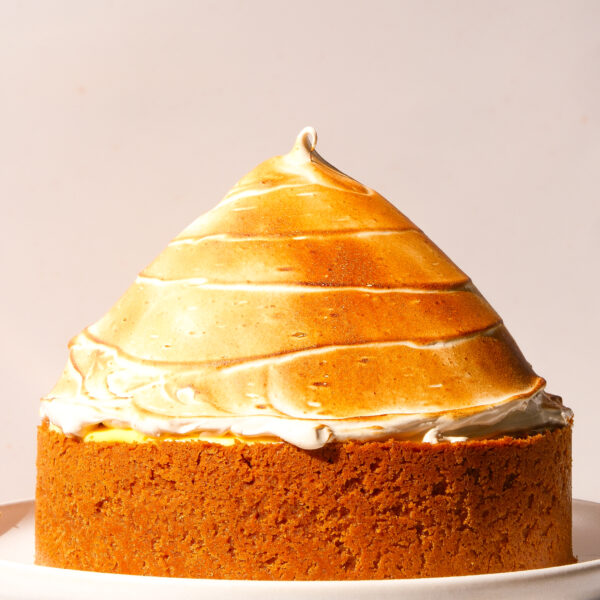
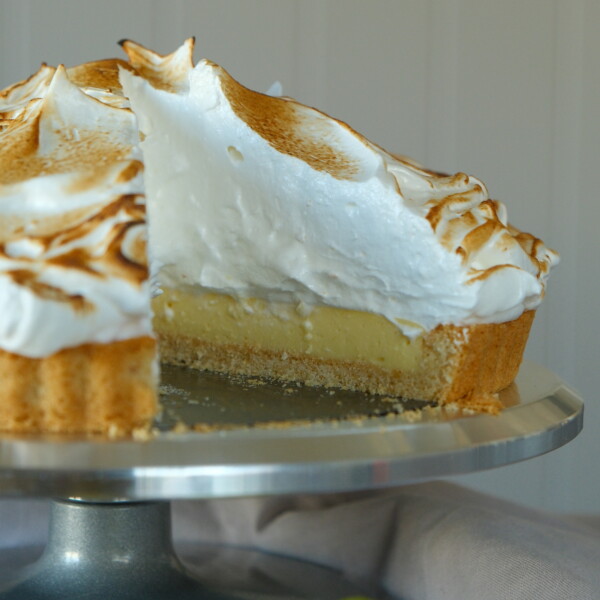
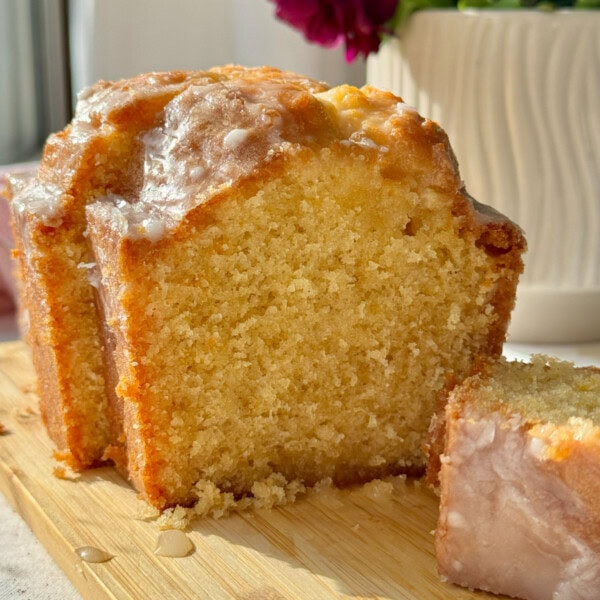
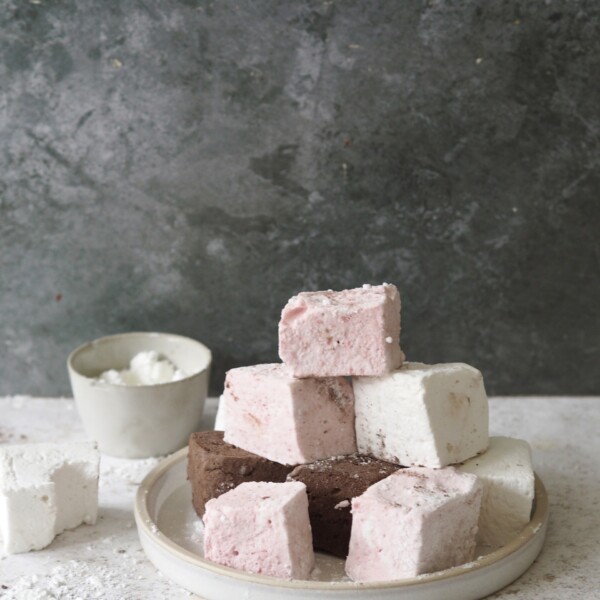
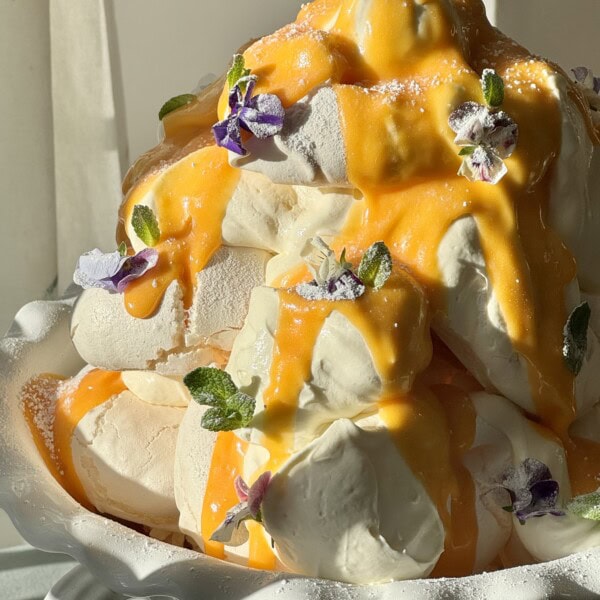
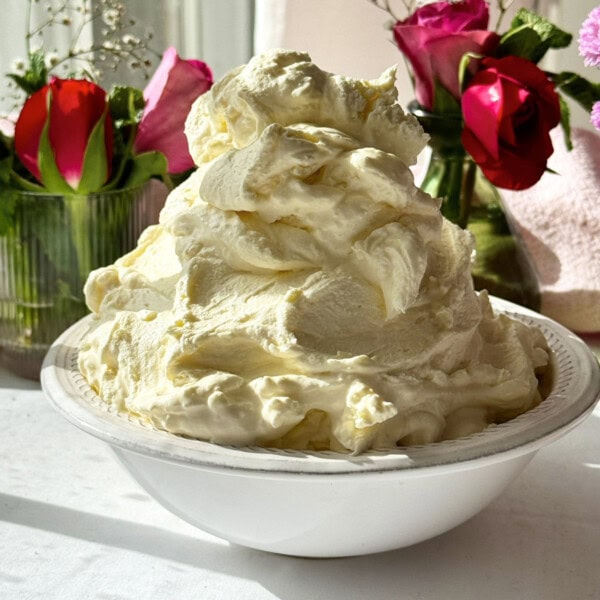
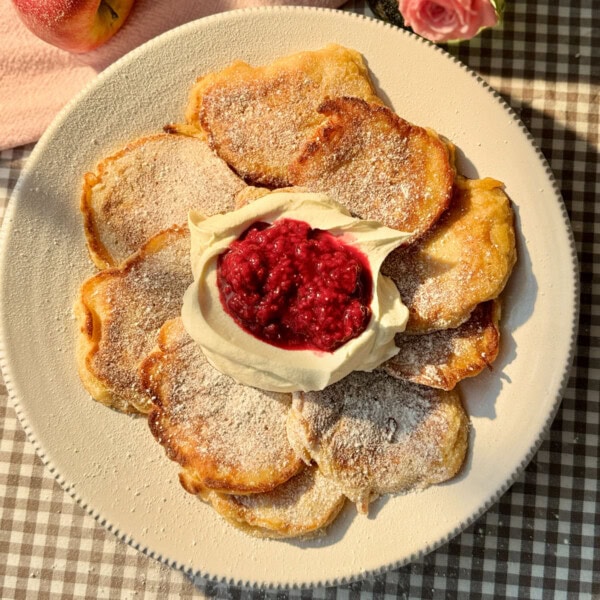
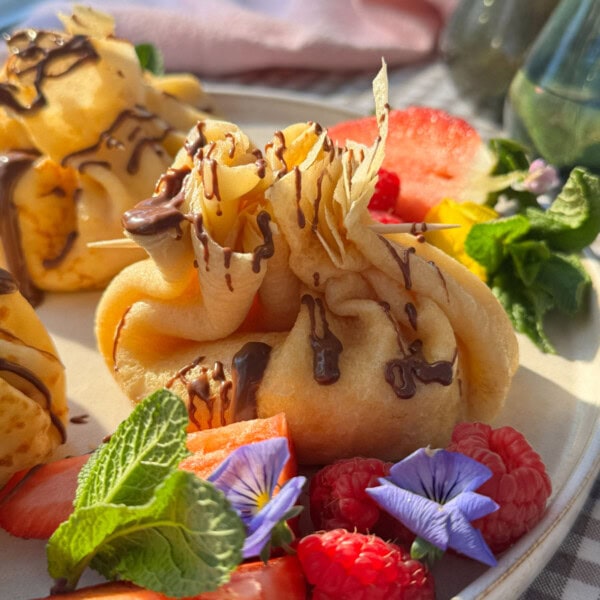
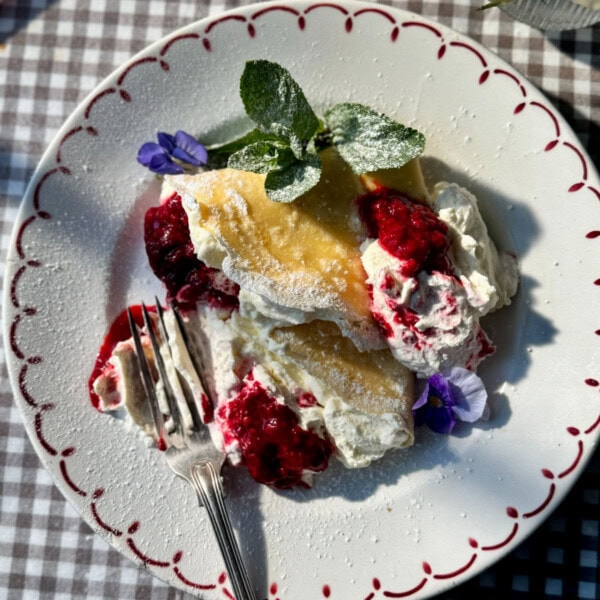
Leave a Reply